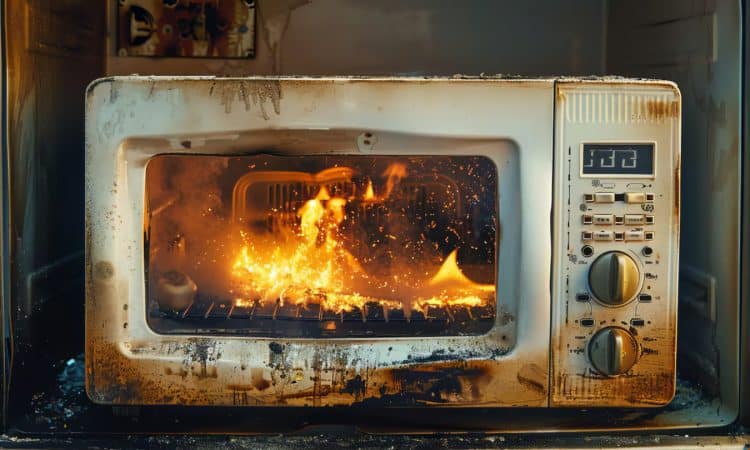
The microwave oven is an essential appliance in most homes, thanks to its ability to heat, defrost, and cook food quickly and efficiently. However, to ensure its proper operation, safety, and longevity, it is important to keep it in the right place.
1. Near Other Major Appliances
Proximity to refrigerators, dishwashers, or stoves can interfere with microwave performance and shorten its life. These appliances can generate heat or electromagnetic interference that disrupts the microwave’s function.
2. Under Cabinets or Low Shelves
Lack of clearance above the microwave makes proper ventilation difficult and can cause overheating. Ensure there is ample space above the microwave for air circulation.
3. Tight Spaces
Placing the microwave in areas that are too tight or enclosed may prevent proper ventilation. Adequate airflow is essential to prevent the microwave from overheating and malfunctioning.
4. Damp Areas
Placing the microwave near a sink or in areas where liquids tend to spill can damage electronic circuits from excessive moisture. Moisture can lead to rust and electrical shorts.
5. Near Sensitive Electronic Equipment
Placing the microwave near televisions, stereos, or computers may cause them to malfunction due to electromagnetic interference. Keep the microwave away from these devices to avoid signal disruption.
6. On the Stove Top
Heat and steam from cooking can affect microwave performance and shorten the life of the microwave. The high temperatures can cause damage to the microwave’s exterior and interior components.
Tips for Avoiding Electrical Problems
Use a Proper Outlet
Be sure to plug the microwave into an outlet that meets the manufacturer’s specifications, preferably one that is grounded to prevent electric shock. Using the correct outlet ensures safe operation.
Avoid Using Extension Cords
Do not use extension cords or multiple adapters as they can overload and cause electrical faults. Always plug the microwave directly into a wall outlet.
Inspect the Power Cord
Inspect the microwave power cord to make sure it is not damaged, worn, or frayed. A damaged cord can lead to electrical shorts and potential fires.
Avoid Overloading the Circuit
Do not connect other power-hungry appliances to the same circuit as your microwave, as this may overload the circuit and cause a power failure or fire.
Hire a Professional
If additional electrical installation is required for the microwave, hire a professional electrician to ensure that the work is done properly and meets safety standards.
Use a Voltage Regulator
Consider using a voltage regulator to protect the microwave from power fluctuations, especially if you live in an area with frequent power problems.
Keep the Area Dry
Make sure the area around the microwave is dry and free of moisture, as water can cause short circuits and damage the electrical components of the appliance.
Avoid Internal Overloading
Do not overload the microwave with large or heavy containers as this may cause excessive power consumption and overheating of the internal circuits.
Clean Regularly
Keep the appliance clean, especially around vents, to prevent dust and grease from accumulating and causing electrical problems. Regular cleaning ensures the microwave operates efficiently.
Read the Owner’s Manual
Follow the recommendations and warnings in the owner’s manual provided by the manufacturer for safe and efficient use of the microwave oven. This ensures you are aware of all safety measures and operational guidelines.
By following these guidelines, you can ensure your microwave operates safely and efficiently, extending its lifespan and maintaining a safe environment in your home.

